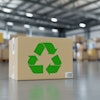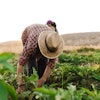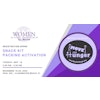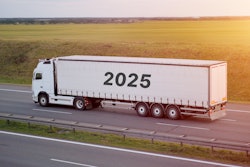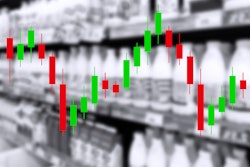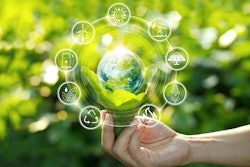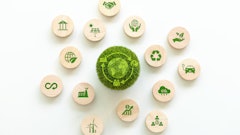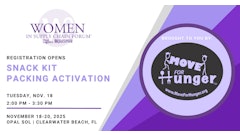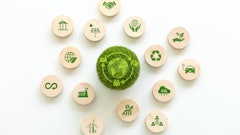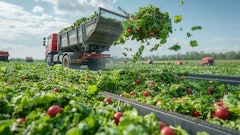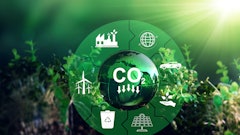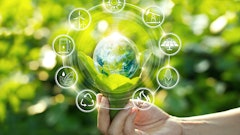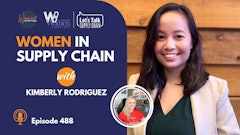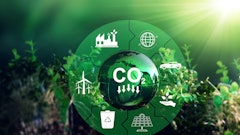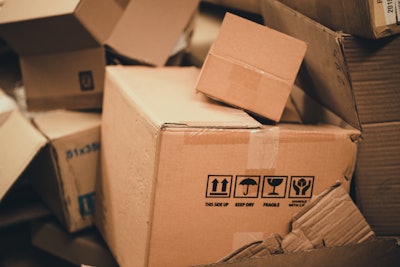
As the world grapples with the mounting issue of packaging waste, the cold food and beverage industry faces a unique set of recycling challenges. With products requiring specific packaging to maintain freshness and withstand cold temperatures, much of this packaging has been historically difficult to recycle. Evolving regulations, particularly in the EU, are setting high standards for recyclability, placing pressure on producers to innovate in design and infrastructure. While these requirements are a welcomed and necessary step, it’s never been so complicated to produce goods in line with sustainability requirements.
However, the success of these innovations hinges on an often overlooked yet game-changing factor: consumer engagement. Proper sorting and disposal of materials are essential to closing the loop on packaging waste and supporting the transition to a truly circular economy, and consumers are a key part of the process.
The complexity problem: from multilayer materials to soft plastics
Modern packaging is complex. Cold food and beverage packaging must meet stringent performance requirements, often achieved through multilayer structures or soft plastics. Multilayered packaging, while effective in protecting products, is notoriously hard to recycle. These packages, which combine different materials for strength, temperature resilience and moisture protection, are challenging to separate, leading to a substantial portion ending up in landfills or being incinerated. Alarmingly, around 2.6 million tons of multilayer packaging waste still faces this fate annually.
The industry, however, is responding to these challenges with innovations in recycling technology. Research is actively advancing methods to separate layers, making multilayered packaging more viable for recycling. Yet, the broader trend is shifting toward mono-materials, which score higher under EU guidelines for recyclability. The upcoming EU Packaging and Packaging Waste Regulation (PPWR), set to be in place by 2030, incentivizes brands to adopt mono-material packaging by offering financial benefits for high recyclability scores. With this regulatory push, brands can minimize costs while meeting sustainability standards, driving a broader adoption of design-for-recycling practices across the sector.
There are other obstacles, too. Soft plastics, for instance (which are commonly used to seal and protect products) require distinct recycling processes from rigid plastics. They can frequently jam recycling machinery, which increases operational costs and can cause delays. There is also a likelihood of contamination from food residue (like dairy, sauces, or juices) that complicates the recycling of clear plastics like PET, as high purity levels are crucial for recycling quality. Cold packaging also has an added barrier to recycling due to the coatings on packaging often required for temperature resistance. For example, ice cream tubs may have water-resistant coatings that can’t be easily separated, and these extra materials and chemicals aren’t always compatible with standard recycling processes.
Effective labelling is another major hurdle. Without clear and consistent guidance, consumers can easily misplace recyclables into the wrong bins, which reduces recycling rates and leads to contamination. The EU’s PPWR envisions a solution with standardized, harmonized labels across packaging and bins, similar to the Nordic Recycling Symbols, which would allow consumers across regions to recycle more effectively.
Much of today’s cold food and beverage packaging is also designed for single use, focusing on convenience rather than recyclability. This single-use approach increases waste and misses opportunities for reusable or mono-material packaging solutions that could better align with circular economy goals. However, innovations in packaging design that prioritize reusability and simplicity are beginning to emerge. Though often met with cost or safety challenges, these designs are essential for reducing waste, as they offer solutions that can work within existing recycling systems rather than against them.
Are changes in consumer behavior the answer?
Even the most recyclable packaging is still classed as waste if it doesn’t reach the right bin. Today, 10 billion packages are released into the market daily, yet only a small fraction is correctly sorted. Incorrect sorting leads to potential recyclables ending up in landfills, incinerated, or contaminating recyclable materials, diminishing their value and contributing to a global waste crisis.
The issue is stark: just 9% of plastic is recycled. This is a massive loss of potential that can be addressed through changing consumer habits. Misplaced recyclables often become environmental liabilities, either contaminating recyclable batches, ending up in landfills, or as litter, each of which has far-reaching consequences. Mismanaged waste contributes to climate change, pollution, and biodiversity loss through methane emissions, CO₂ from incineration, and harmful contaminants seeping into ecosystems.
While advancements in recycling infrastructure are crucial, we cannot afford to wait for new systems and packaging designs to fully catch up. Even in nations with sophisticated recycling systems like Sweden, where advanced plastic recycling plants operate, around just 30% of plastic is sorted by households. Immediate action to boost consumer awareness and change sorting behaviors can significantly elevate recycling rates—and technology can drive this change efficiently.
Proper sorting leads to cascading environmental and economic benefits. Correct sorting prevents the contamination that stems from “wishcycling,” the act of throwing non-recyclables into recycling bins hoping they’ll be processed. It also helps retain the purity of recyclable materials, ensuring they make it through recycling systems rather than being discarded as waste. Essentially, a higher volume of correctly sorted waste signals demand for better recycling infrastructure, motivating governments and companies to expand facilities and improve recycling technologies. In addition to this, proper waste management reduces pollution risks by preventing plastics and other harmful materials from entering oceans and rivers, which is particularly crucial in regions lacking robust waste management systems. When recyclables stay within production cycles, they lower the demand for raw materials and support the circular economy, conserving resources and easing the strain on natural ecosystems.
So, how can we encourage consumers to adopt better recycling practices? Financial incentives and reward schemes could be a solution. Rewarding responsible behavior is a proven way to encourage consumers to consistently sort their waste correctly, and connecting with consumers who do this (for example, via social media) can help to keep them encouraged to maintain this behavior.
Governments play a crucial role in driving change. Consumers need solutions that are accessible and easy to implement. One approach is the rise of Digital Deposit Return Schemes (Digital DRS), which leverage technology to simplify recycling by enabling consumers to scan and return items via an app, often from the comfort of their homes. While countries like Germany and Norway have successfully implemented DRS for beverage containers, these schemes serve as a starting point for more ambitious services targeting all types of packaging.
Innovative solutions are emerging that position brands and consumers as key players in the ecosystem value chain. By broadening the scope beyond beverage containers, brands have the opportunity to take proactive action today, empowering consumers to become gamechangers in sustainable practices. Through digital tools, personalized incentives such as cashback or discounts, and a focus on engaging consumers directly, these services are poised to redefine how packaging is managed, recycled, and reused on a larger scale. This holistic approach not only boosts recycling rates but also builds a more sustainable and participatory ecosystem.
The future of sustainable packaging
While regulatory requirements for packaging tracking are not yet mandatory, the trend toward lifecycle tracking is steadily growing. Policies like the EU’s PPWR and the UK’s Extended Producer Responsibility (EPR) scheme are increasingly demanding comprehensive data collection on packaging waste. Emerging technologies are well-suited to support these efforts, enabling real-time tracking and reporting through unique product identifiers. Pilot projects have demonstrated that full-cycle tracking—from production through consumer sorting to waste management—is already a practical reality. This broader tracking system not only facilitates compliance with recycling targets but also enables the implementation of expanded deposit return systems for various packaging types (more than just bottles and cans).
Ultimately, recycling in the cold food and beverage sector poses significant challenges, but the tools and strategies to transform packaging waste into valuable resources are increasingly accessible. Advancements in mono-material packaging, improved labeling, and the use of technology are all critical components. Yet, the success of these innovations hinges on active consumer participation. Correct sorting is reliant on consumers being engaged and informed. By combining cutting-edge technology with initiatives like Digital DRS and education campaigns, the industry can empower consumers to play a vital role in driving the circular economy forward. Without their commitment, even the most advanced systems cannot reach their full potential, underscoring the critical importance of making recycling both accessible and rewarding.


